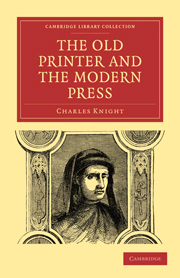Summary
From the time when Hume's ‘History’ was published at 5s. a volume, there appears to have been a steady advance in the price of books to the end of the century. In the eleven years from 1792 to 1802, there was an average publication of 372 new books per year. The number of new books had quadrupled upon the average of those published from 1701 to 1756. But the duodecimo had been increased in price from 2s. 6d. to 4s.; the octavo from 5s. or 6s. to 10s.; the quarto from 12s. to 1l. 1s. From 1800 to 1827 there were published, according to the London Catalogue, 19,860 books, including reprints; for which reprints deducting one-fifth, there were 15,888 new books, being an annual average of 588. Books were still rising in price. The duodecimo mounted up to 6s., or became a small octavo at 10s. 6d.; the octavo was raised from 10s. to 12s. or 14s.; the quarto was very frequently two guineas. Some of this rise of price was unquestionably due to the general rise in the value of labour, and to the higher price of paper. But more is to be ascribed to the determination of the great publishers not sufficiently to open their eyes to the extension of the number of readers, and the absolute certainty, therefore, that a system of extravagantly high prices was an unnatural, bigoted, and unprofitable system.
- Type
- Chapter
- Information
- The Old Printer and the Modern Press , pp. 238 - 259Publisher: Cambridge University PressPrint publication year: 2010First published in: 1854



